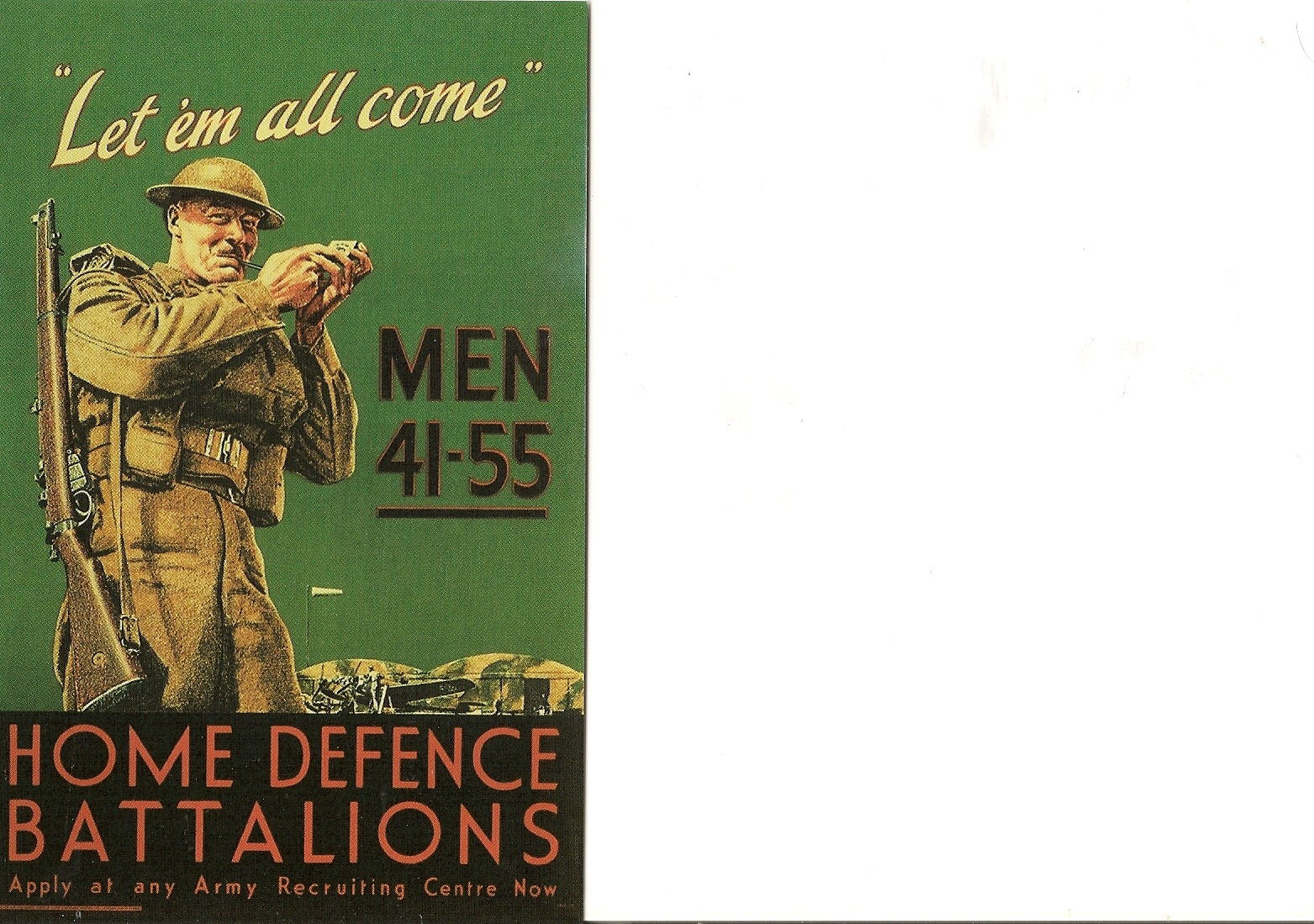Invasion scare
By 10th May 1940 when the battle of France had started, Britain became braced for invasion from across the English channel. Preparations had begun for the eroneous concern of German paratroopers being dropped before the event of a full scale invasion, with irregular disparate groups of men forming into spontaneous disorganised gangs. Hysteria whipped up by the media did not quell the nonsense that fifth columnists were also operating, waiting to guide in an imminent airbourne assault.
The local defence volunteers (LDV) were created to organise men aged between 17 and 65 to form more organised resistance, should the enemy arrive, though the expectation was “when” and not “if”- such was the paranoia. Many of these men were Great war veterans or teenagers. In common they shared a lack of weaponary, not least as a result of the hasty retreat from Dunkirk between late May and Early June which had left behind tonnes of equipment on German occupied French soil. “Improvised weapons” were therefore created, of which the Molotov cocktail was the easiest to assemble.
Renamed “The Home Guard”, there were originally no ranks in the force and no officers but in February 1941 this had changed and all HG officers were listed in “The Home Guard list”, similar to the Army List.
Home guards were organised into areas of command, zones, groups and battalions. Western command covered the Western side of Great Britain from Herefordshire, through Wales and Cheshire to the industrial centres of Lancashire, Cumberland, Westmoreland and crucially important to this study, the Midland counties of Worcestershire, Warwickshire, Shropshire and Staffordshire.
Their main role was observation and information, Obstruction and Patrol and protection. These would have included manning roadblocks at key transport points such as roads, bridges, canals and railway lines, and should invasion occur, destroying such transport links to stop the German advance. Observation points would also be in communication with church towers from which the signal of invasion would be initiated to the public. Local knowledge of the area would be key to its defence as well as an ability to “look, duck and vanish.”
Numerous booklets and training aids were produced at the time for the home guard, largely no doubt to improve morale more than anything else. Some of these original documents have been sourced by us in this study and they provide to the latter day reader what life was like at this time, the fears of invasion, and most of all how untrained civilians were given responsibility for weapons which were to prove more dangerous and life threatening than the German paratroopers who never landed.
Numerous primary sources of information have also been accessed by us in a literature revue of Home Guard activities and training techniques.
It was also a time when women were invited into the factories to make weapons of war as they had been in World War One.


